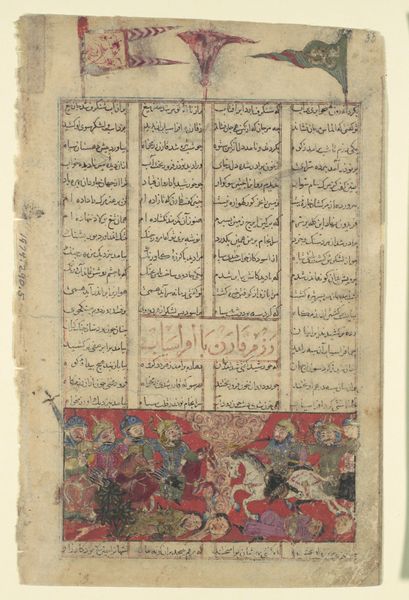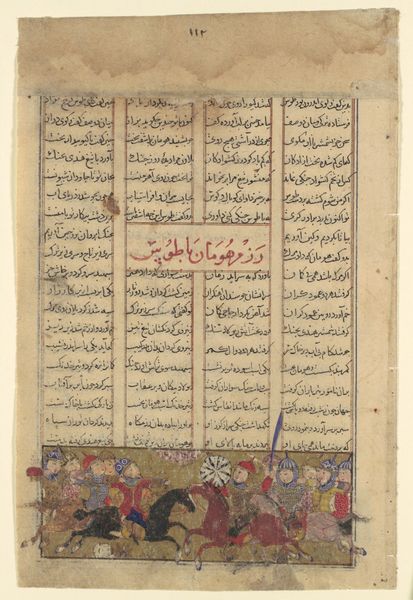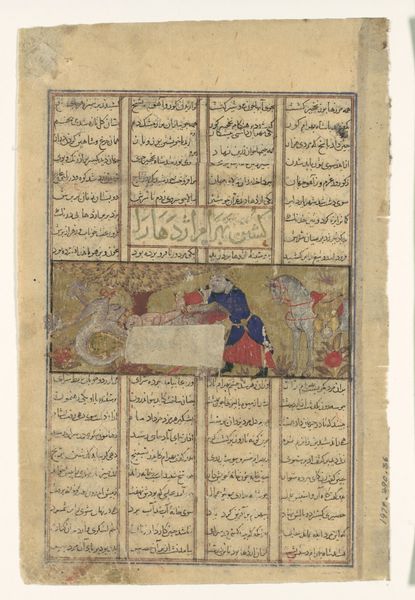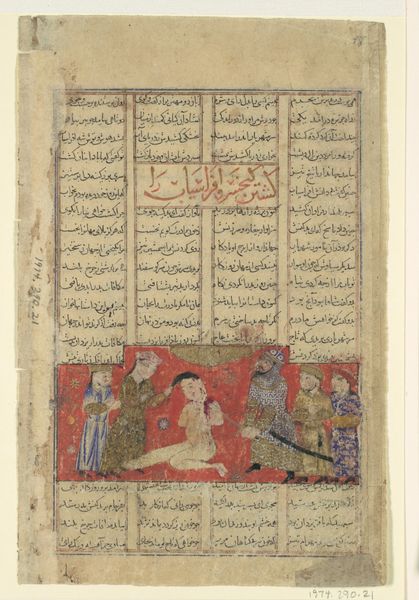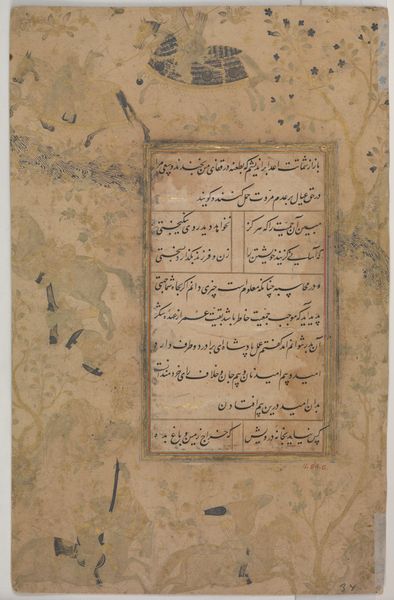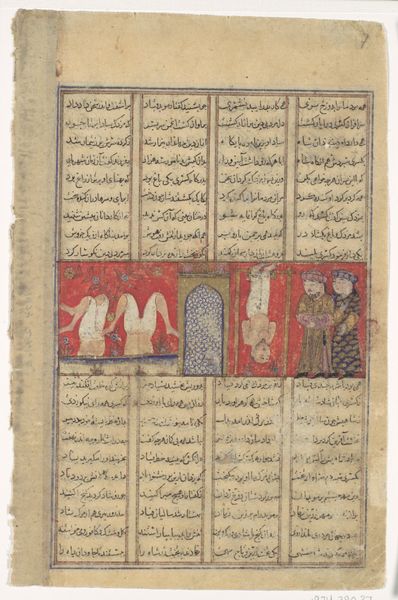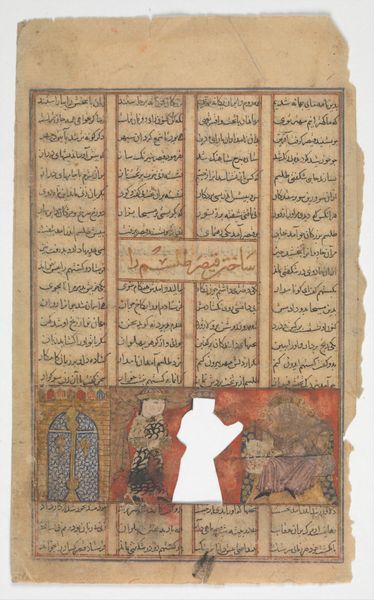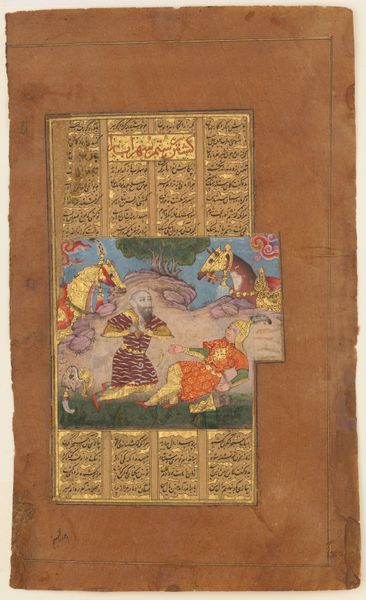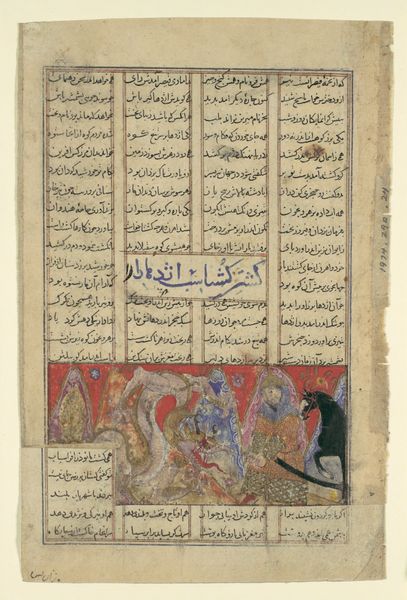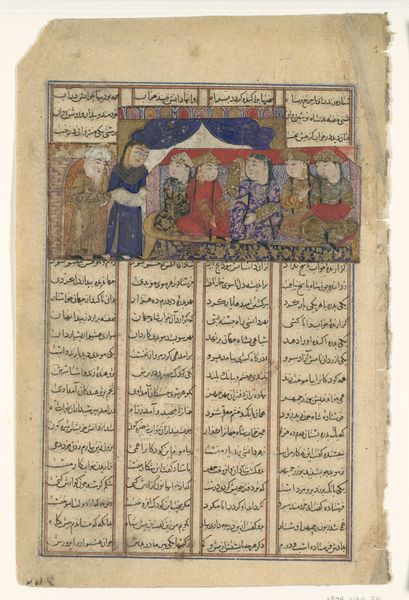
"Khusrau and Shirin Conversing in Landscape at Night", Folio from a Khamsa (Quintet) of Nizami of Ganja 1600 - 1655
0:00
0:00
painting, paper, ink
#
portrait
#
narrative-art
#
painting
#
landscape
#
paper
#
ink
#
coloured pencil
#
orientalism
#
islamic-art
#
miniature
Dimensions: Page: H. 11 7/8 in. (30.2 cm) W. 7 7/16 in. (18.9 cm) Painting a: H. 3 7/16 in. (8.7 cm) W. 4 11/16 in. (11.9 cm) Painting b: H. 1 13/16 in. (4.6 cm) W. 4 5/8 in. (11.7 cm)
Copyright: Public Domain
Curator: We’re standing before “Khusrau and Shirin Conversing in Landscape at Night,” a folio plucked from a Khamsa, or Quintet, of Nizami of Ganja, created sometime between 1600 and 1655. It’s a painting, a miniature really, done with ink and what looks like colored pencil on paper. Editor: Oh, wow, it feels like eavesdropping on a dream. There's this gentle, floating quality. Are those canopies hanging mid-air? They feel both grounded and completely untethered at the same time. Curator: Exactly. The artist paints a moment of intimacy, depicting the legendary lovers Khusrau and Shirin engaged in conversation. Placed underneath lines of text from the tale, the image uses elevated platforms to show them in their landscape. It really highlights the narrative art style prominent in Islamic art. Editor: The figures themselves are quite stylized. Their expressions, or lack thereof, pull me in. I’m wondering what’s going unsaid. You know, that almost stifled feeling of a conversation pregnant with possibility… There’s this gorgeous jewel-toned palette; gold, reds, blues, greens. Curator: And this is quintessential Orientalism. Note the detailed costumes, the idealized setting… It paints an enchanting image of the East filtered through a distinctly Western lens. It evokes the romanticism so popular in that era. The figures almost look like porcelain dolls, carefully posed within a theatrical tableau. Editor: The tension between reality and artifice is potent. What seems almost cloying and overly sweet, becomes subtly disturbing. This imagined intimacy teeters on the brink of artificiality, perhaps reflecting a more profound observation on love, longing, or political theater… Curator: Ultimately, it is a testament to the enduring power of Nizami's tale and the artistry used to elevate that story to life in a painting now hanging far from its creation. Editor: I am reminded that these small snapshots of conversations or encounters echo down through time to reveal how the story continues to hold truths to those that allow the work to open the channels within to the moment itself.
Comments
No comments
Be the first to comment and join the conversation on the ultimate creative platform.

